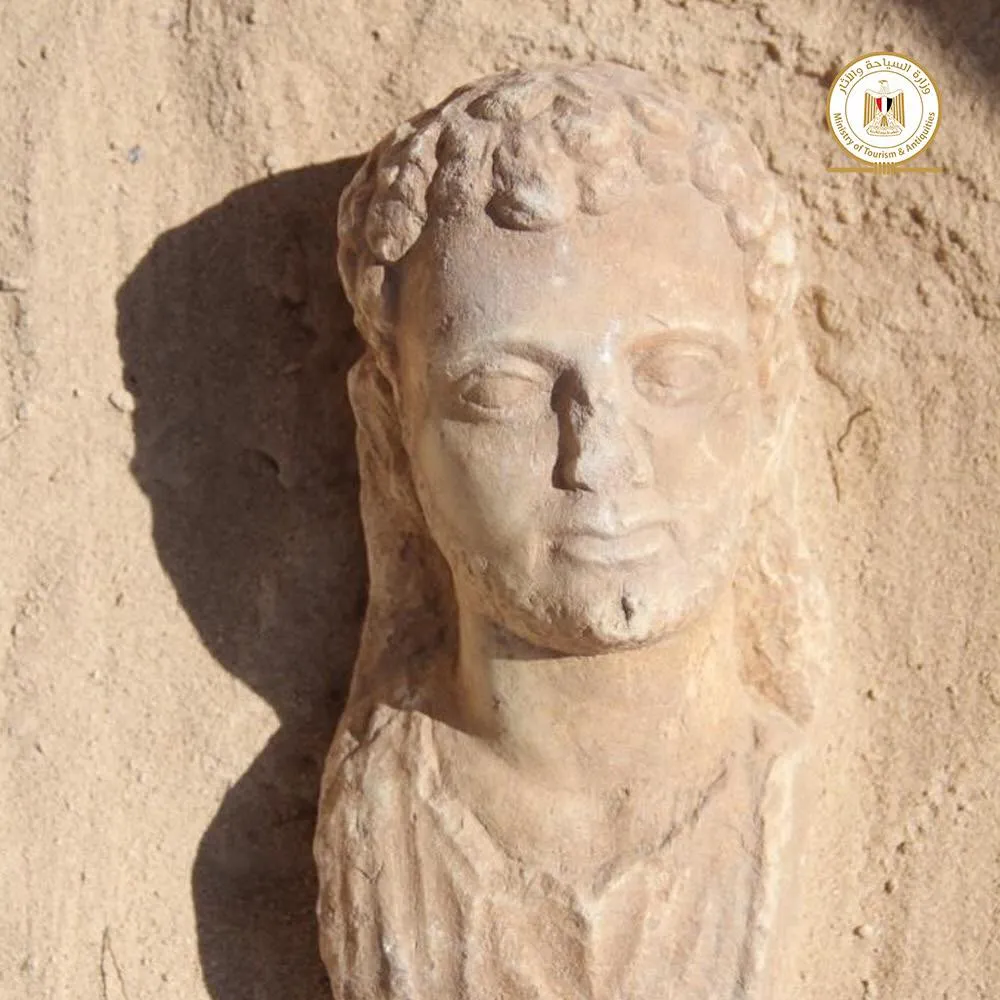Archaeologists in Egypt Discover Mummy With Gold Tongue
Ancient embalmers likely placed the tongue-shaped, gold foil amulet in the deceased’s mouth to ensure they could speak in the afterlife
:focal(476x290:477x291)/https://tf-cmsv2-smithsonianmag-media.s3.amazonaws.com/filer/89/9c/899cd329-2631-4a5f-861b-0b7241ef4b2d/gold_tongue.jpg)
Archaeologists conducting excavations at the temple of Taposiris Magna in western Alexandria, Egypt, have unearthed a 2,000-year-old mummy with a gold tongue.
As Nihal Samir reports for Daily News Egypt, researchers from a dual Egyptian-Dominican mission discovered the golden-tongued mummy while surveying 16 poorly preserved burials encased in rock-cut crypts—a popular form of interment during Egypt’s Greco-Roman period.
Crafted out of gold foil, the tongue-shaped amulet was likely placed in the deceased’s mouth to ensure they’d be able to speak in the afterlife, per a statement from Egypt’s Ministry of Tourism and Antiquities. (Egypt Independent’s Al-Masry Al-Youm reports that researchers at the Alexandria National Museum are now studying two such gold foil amulets, as well as eight golden flakes representing the leaves of a wreath.)
If the individual encountered Osiris, god of the underworld, in his domain, they would have needed a way to communicate with the deity, notes Owen Jarus for Live Science. The team is unsure whether the mummy had a speech impediment in life and why exactly the artificial tongue was made out of gold.
In the statement, lead archaeologist Kathleen Martinez of the University of Santo Domingo says that two of the most significant mummies found at the site were wrapped in gilded cartonnage, or plastered layers of linen or papyrus. One of the mummies sported golden decorations depicting Osiris, while the other wore a horned crown with a cobra snake affixed to its band and a necklace featuring a falcon, the symbol of the god Horus. The researchers also recovered the remains of ancient scrolls buried alongside the mummies.
Ptolemy II, son of Alexander the Great’s general Ptolemy I, founded Taposiris Magna around 280 B.C. The city’s name translates to “great tomb of Osiris,” and Egyptian lore holds that god’s body (or at least a dismembered part of it) was buried there, according to Chip Brown of National Geographic. A number of temples dedicated to Osiris and Isis, a healing goddess who was also his wife and sister, stood within Taposiris Magna’s walls. The temple where scholars uncovered the golden-tongued mummy was among the religious sites honoring the god of the underworld.
Over the past ten years, Martinez and her colleagues have found a number of important archaeological finds that “changed [their] perception” of the temple, notes the statement.
Other highlights of the most recent excavation include a woman’s nearly full-body funeral mask, statues portraying people interred at the site, and eight marble masks dated to the Greek and Roman eras, per the statement. Archaeologists had previously discovered a cache of coins embossed with Cleopatra’s face at Taposiris Magna, implying that Egyptians used the temples during her reign (51–30 B.C.).
Per the statement, the statues depicting people buried at the site were well preserved. Archaeologists could still distinguish their hairstyles, headdresses and facial features.
Though scholars don’t know exactly when these individuals died, Live Science reports that they lived either under the Ptolemaic dynasty (304 B.C. to 30 B.C.) or during the early days of Roman rule, which began with Cleopatra’s death in 30 B.C.
Experts will continue to explore the site and document their findings.
/https://tf-cmsv2-smithsonianmag-media.s3.amazonaws.com/accounts/headshot/Isis_Davis-Marks_thumbnail.png)

/https://tf-cmsv2-smithsonianmag-media.s3.amazonaws.com/filer/53/45/5345c952-bd91-4330-babf-d7a7ae0a5c89/144035551_3782173005161655_9145724982662265586_o.jpg)
/https://tf-cmsv2-smithsonianmag-media.s3.amazonaws.com/filer/67/f9/67f99957-c5cf-4fa8-9c93-075e3fb7b622/144606695_3782173025161653_8341140510376232681_o.jpg)
/https://tf-cmsv2-smithsonianmag-media.s3.amazonaws.com/accounts/headshot/Isis_Davis-Marks_thumbnail.png)